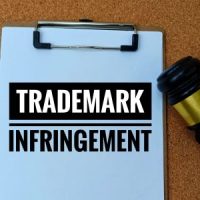An Overview of Evidence You Can Use to Prove a “Likelihood of Confusion” in a Trademark Infringement Case in Florida

A trademark can be a key part of your branding. You have the right to take legal action against another company (direct competitor or otherwise) that infringes on your trademark. The United States Patent and Trademark Office (USPTO) explains that claimants must prove a reasonable “likelihood of confusion” to establish trademark infringement. Here, our Florida trademark attorney provides an overview of the evidence that you can use to prove a “likelihood of confusion” in a trademark infringement case.
Evidence that Can Be Used to Prove a Likelihood of Confusion in a Trademark Case
The Similarity of the Marks
To start, courts in a trademark infringement case will carefully review the marks in questions. They can compare the marks in sight, sound, and meaning. The actual marks matter. Relevant evidence includes side-by-side comparisons, the use of marketing materials, and potentially even consumer surveys about the marks.
The Strength of the Plaintiff’s Mark
As a plaintiff in a trademark case, the “strength” of your mark matters. Strong, distinctive marks receive broader protection than weak, descriptive ones. How do you show that you have a strong trademark? Evidence of strength may include federal registration, length of use, sales volume, advertising expenditures, and media recognition.
The Similarity of the Goods or Services
Are you and the defendant offering goods or services that are relatively similar? If so, that increases the risk that there will be confusion. Indeed, the closer the goods or services, the more likely confusion exists. Some evidence that can be used to demonstrate this point includes product categories, distribution channels, and customer bases.
The Similarity of Sales and Marketing Channels
Trademark infringement is more likely to be found when the parties to a case are direct competitors. The reason is that there is simply a greater likelihood of consumer confusion. When two businesses use the same channels (online platforms, retail stores, trade shows, etc), confusion is a significant risk.
Any Evidence of Actual Confusion
What actually happened is also key. You do not have to prove that consumers have been confused as part of a trademark infringement claim, but it does help support your case. Indeed, any proof that consumers were misled is highly persuasive. Evidence may include mistaken inquiries, misdirected emails, survey results, or testimony from confused customers.
The Defendant’s Intent
Finally, you may have evidence regarding the intent of the other business. That is relevant in a trademark infringement case. If the defendant intended to benefit from the plaintiff’s reputation, courts may infer likelihood of confusion. Evidence includes internal communications, design choices, and the timing of adoption of the mark.
Get Help From a Trademark Infringement Lawyer in South Florida Today
At Perkins Law — Brand Protection, our Florida intellectual property attorney has the skills and experience to take on trademark infringement cases. If you have any questions about proving a likelihood of consumer confusion, we can help. Contact us today for a fully confidential case review. We handle trademark infringement cases throughout the region in South Florida.
Source:
uspto.gov/trademarks/basics/what-trademark
